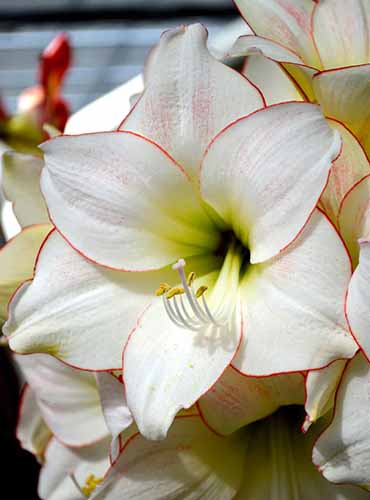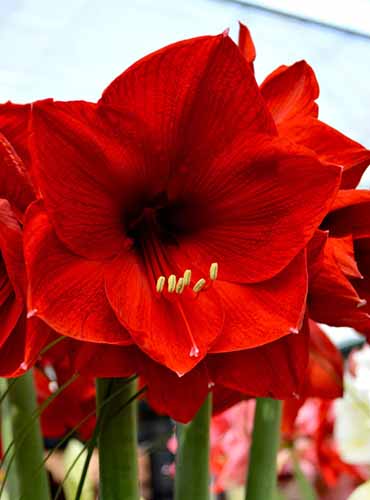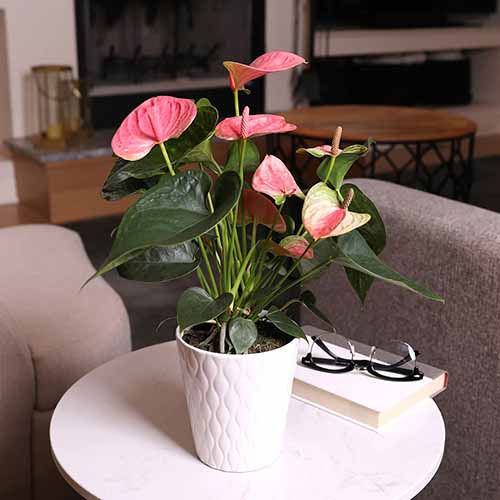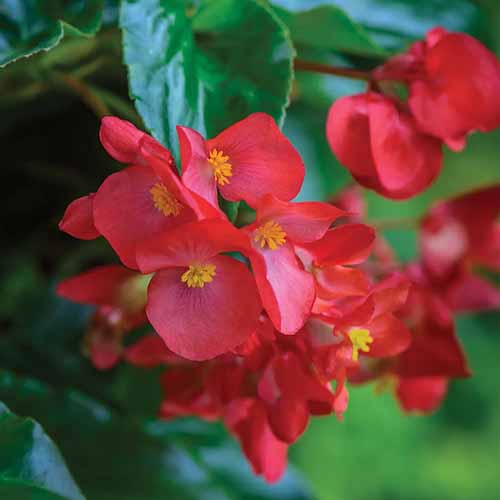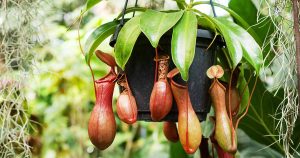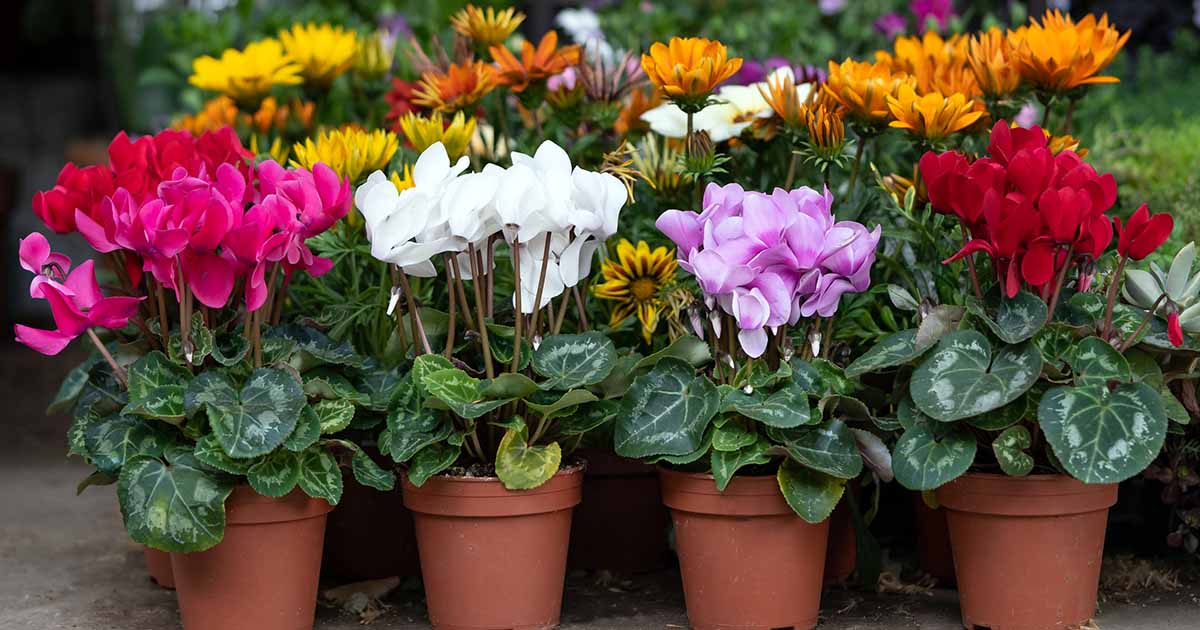
1. African Violet
African violets (Streptocarpus subg. Streptocarpella sect. Saintpaulia) are one of the few species that bloom indoors with traditional-looking flowers rather than funky inflorescences or itty-bitty blossoms.
The flowers are often violet, but blue, red, white, fuchsia, pink, salmon, and multicolored types are available as well.
They grow perfectly fine in low light, but if you want them to bloom, they need bright, indirect light for a few months out of the year. Otherwise, you’ll have some pretty foliage but not much else.
Since they stay so small, African violets work really well on a desk or shelf under a grow lamp placed about eight inches away.
Pick up a four-pack of Optimara Series plants from Optiflora African violets via Amazon.
Learn more about growing African violets in our guide.
2. Amaryllis
Amaryllis (Hippeastrum spp.) are some of the most instantly recognizable indoor flowering plants and they brighten up our homes during the holidays with their red, purple, pink, salmon, white, green, or cream blooms.
To force the plants to bloom indoors, they need direct sunlight for several hours per day – at least six is ideal.
But once they burst forth, feel free to move the plants into low light. The flowers won’t fade any more quickly than usual.
I’m partial to the picotee coloration like you’ll find on this white and red variety from Dutch Grown.
You can bring them home in packs of one, five, ten, or 20 bulbs.
Or go for something a bit more traditional with ‘Red Lion’ – sporting huge blossoms in bold red.
It’s also available at Dutch Grown in the same quantities.
And have a read of our guide to growing Amaryllis for more details.
3. Anthurium
Anthurium plants are easygoing and will grow in low light, but in these conditions the inflorescences might be lacking in color, or the plant may not bloom at all.
I have one in a woefully dark spot, and it does bloom, but it only produces a few flowers, and they’re muted in color. Instead of red, they’re mostly green with a faint red hue.
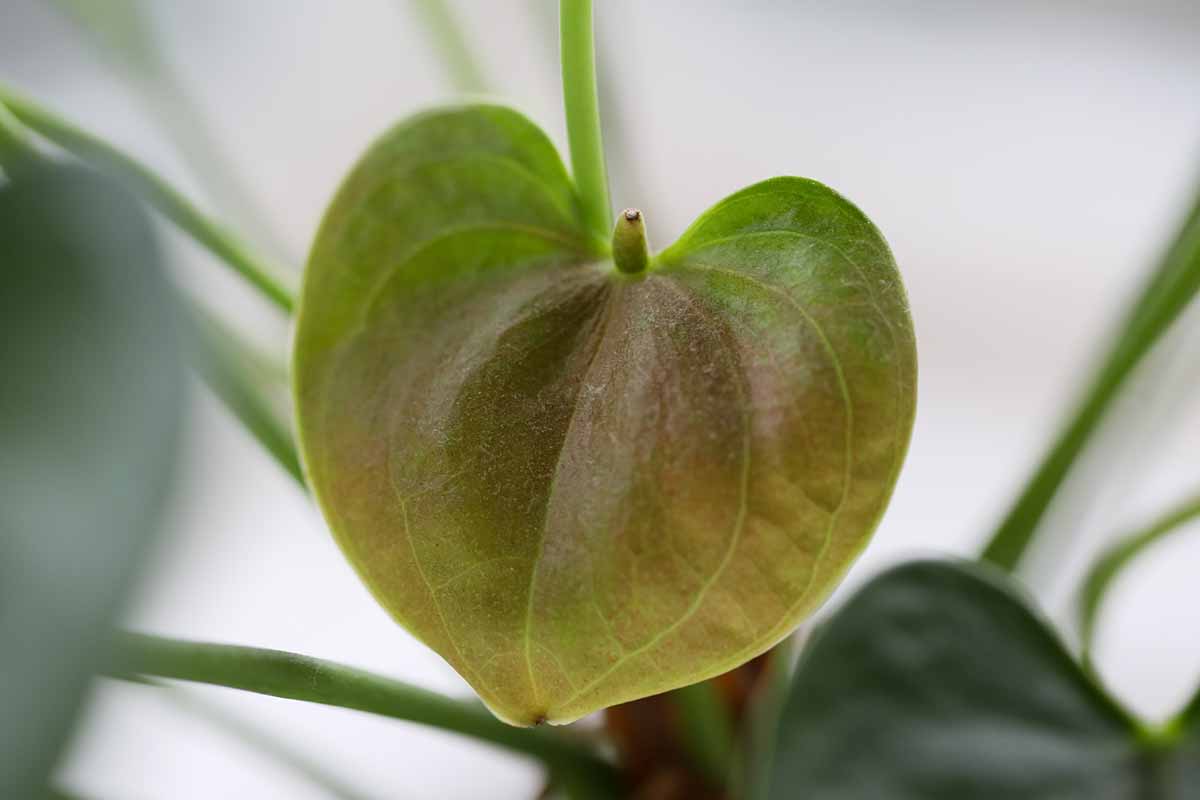
I don’t complain because I’m out of spots with perfect light, so it either does its best with what I can give it, or I’ll have to send it to the big garden in the sky.
But if you want yours to put on a big show, give it bright, indirect light, or supplement with grow lights, at least for a few months out of the year. There are lots of color choices out there.
If you want something clean and contemporary, this mini white option from Hirt’s Gardens, available at Walmart, would be perfect. It comes in a three-inch pot.
Or grab a cheerful pink option at Fast Growing Trees. They carry ‘Sweet Dream Pink’ in a decorative white pot perfect for gifting.
Or if you prefer the traditional red, it is available in four-inch containers at Nature Hills Nursery.
You can learn more about how to grow anthuriums in our guide.
4. Begonia
Honestly, I don’t even care if my begonias (Begonia spp.) blossom. Some of them have such exciting leaves that the flowers are merely supporting players.
I keep my polka dot begonia in pretty dismal light. I just don’t have enough bright spots, and it’s more tolerant of low light than many of my other houseplants.
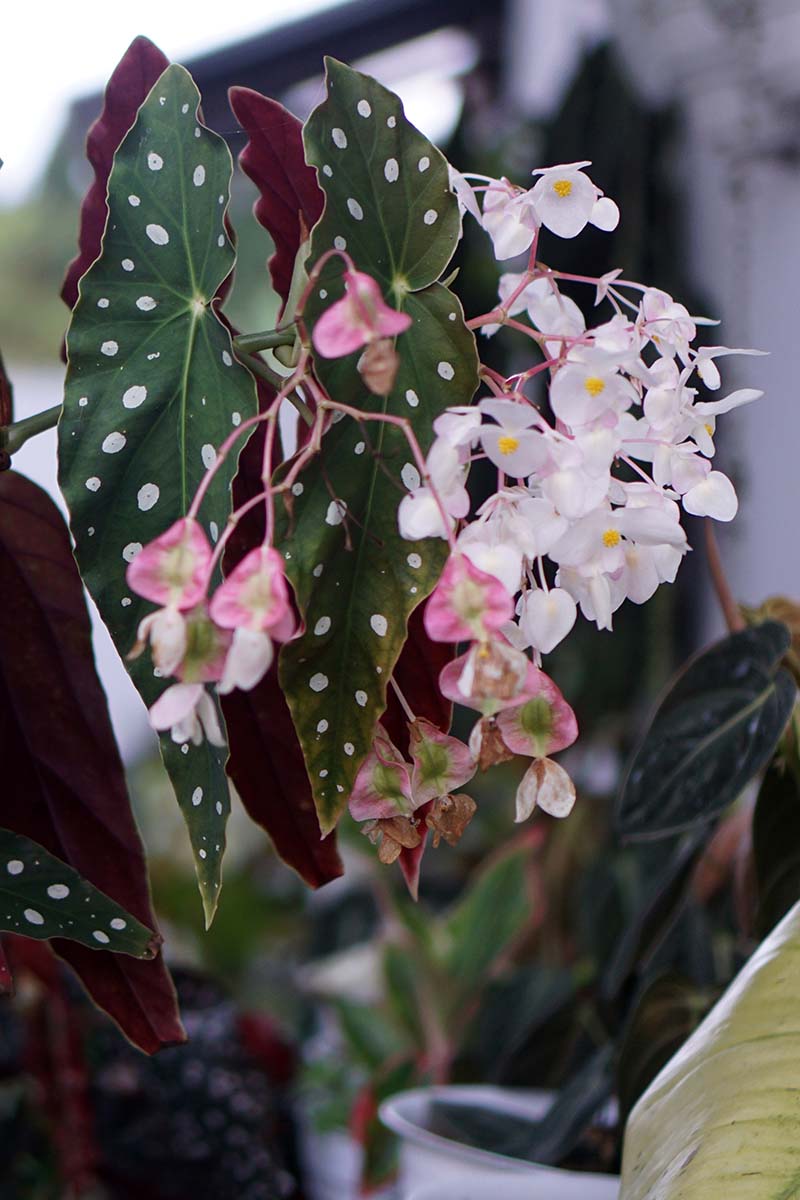
When you want to encourage blooms, move the plant into morning sun for a few months, and you’ll be treated to a flowering performance.
There are even a few species and hybrids that will bloom in low light.
They’re such accommodating plants! Not all begonia species bloom, by the way, so check the one you’re considering to be sure it’s a flowering type.
For example, the Dragon Wing® hybrid will bloom in pretty much any spot you can find in your home.
The glossy green leaves look dramatic against the deep red blossoms. You can purchase 25 seeds or a live four-plant bundle at Burpee.
Learn more about how to grow begonias as houseplants in our guide.
5. Bromeliad
The Bromeliaceae family encompasses a wide range of species, from pineapples (Ananas comosus) to air plants (Tillsandia spp.) Here, we’re talking about the many species with long, straplike leaves and colorful bracts.
The flowers on bromeliads are insignificant, but the spikes that hold them which are leaf-like structures called bracts, are pretty impressive. Most of them won’t bloom indoors, and especially not when they’re growing in low light.
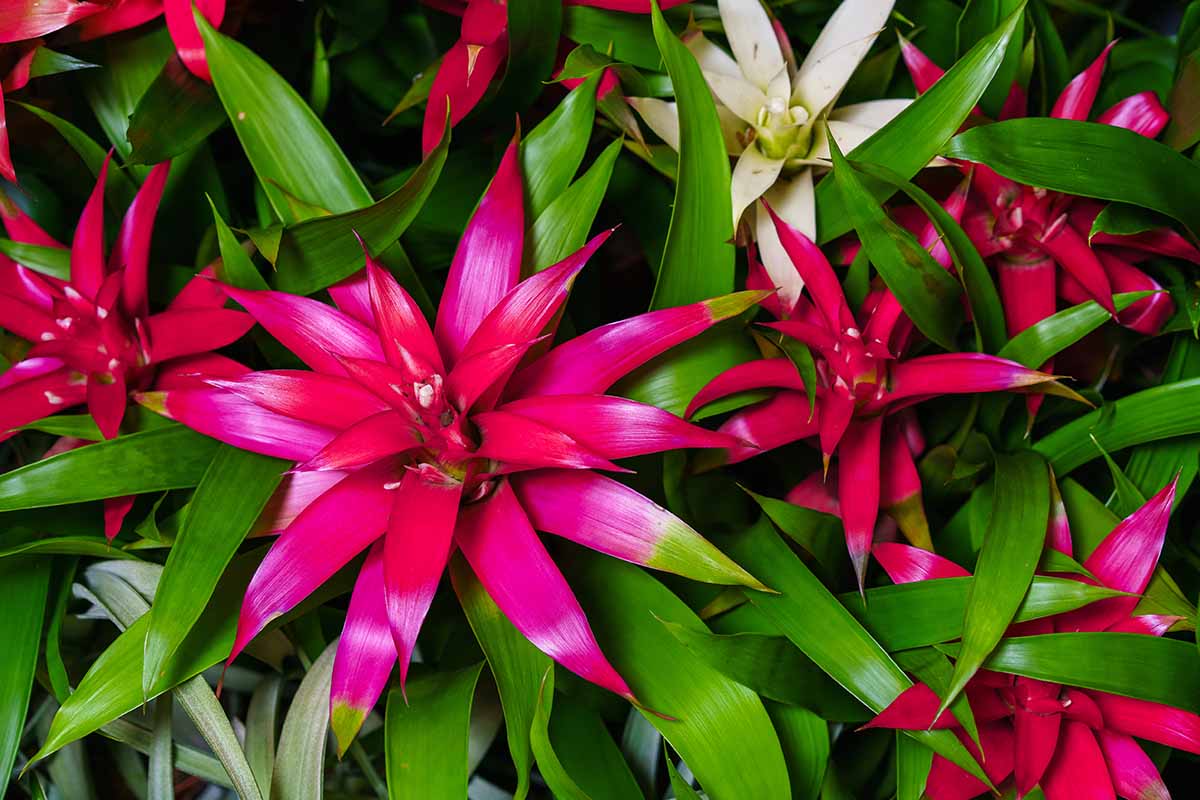
So what is this plant doing on this list? The colorful bracts give you flower vibes even in dark exposure.
The bracts come in red, orange, yellow, green, cream, white, burgundy, or purple. Pretty much all colors except blue. They add color and interest that won’t leave you missing the blossoms.
If you do want to bring on the blooms, it’s possible, regardless of the light you have them in. The secret is to place the plant in a large, clear plastic bag and put an apple in there with it. Seal it shut and leave it like that for three days.
After three days, toss out that apple (or eat it) and take off the plastic. Between six weeks and three months later, depending on the species, the plant will bloom.
Just know that after the flower spike – which can last for months – fades, the plant will die. Don’t worry, you can propagate it by the pups it sends out.
Grab a pink Tillsandia ‘Antonio’ hybrid or an orange Vriesea ‘Intenso Orange’ hybrid in a five-inch decorative pot at Fast Growing Trees.
You can learn more about bromeliads and how to grow them in our guide.
6. Calathea
Depending on the species, prayer plants, aka calathea (Goeppertia spp.), bloom in pink, yellow, purple, or white. They rarely bloom indoors, though.

